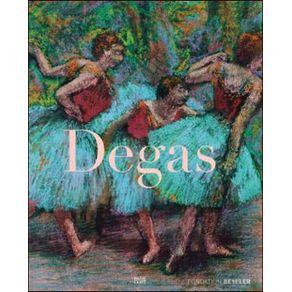EDGAR DEGAS - THE LATE WORK
Favoritar
De: R$ 675,00Por: R$ 472,50ou de
Preço a vista:R$ 472,50
Economia de R$ 202,50Calcule o frete:
Para envios internacionais, simule o frete no carrinho de compras.
Calcule o valor do frete e prazo de entrega para a sua região
Sinopse
Ficha Técnica
Especificações
| ISBN | 9783775734431 |
|---|---|
| Pré venda | Não |
| Peso | 250g |
| Autor para link | ARMSTRONG CAROL |
| Livro disponível - pronta entrega | Não |
| Dimensões | 23 x 16 x 1 |
| Idioma | Inglês |
| Tipo item | Livro Importado |
| Número de páginas | 224 |
| Número da edição | 1ª EDIÇÃO - 2012 |
| Código Interno | 702267 |
| Código de barras | 9783775734431 |
| Acabamento | HARDCOVER |
| Autor | ARMSTRONG, CAROL |
| Editora | HATJE CANTZ PUBLISHERS |
| Sob encomenda | Sim |



